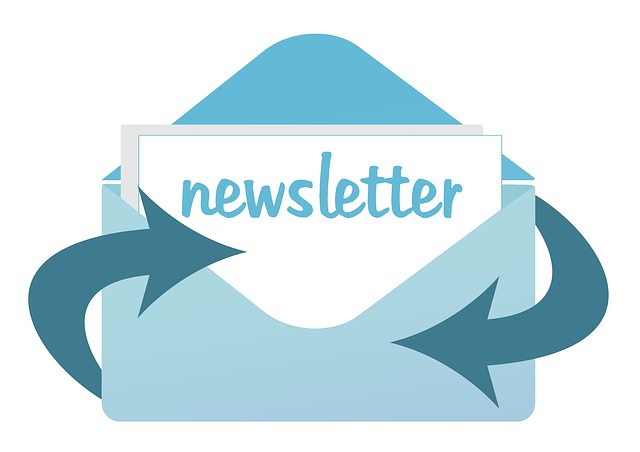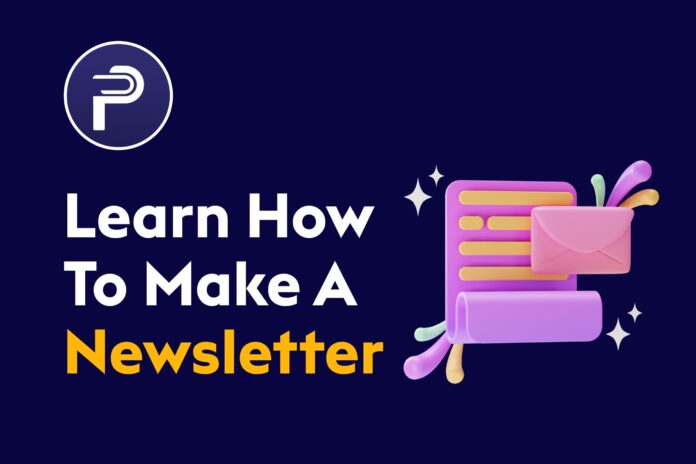Introduction
Creating a newsletter presents a potent opportunity to engage with your audience, disseminate valuable content, and enhance your brand’s exposure. Regardless of whether you’re a corporation, a non-profit entity, or an individual with a narrative to share, a meticulously crafted newsletter can serve as a powerful tool for fostering meaningful connections within your community. This guide will outline the essential steps to develop a newsletter that not only boasts an appealing design but also deeply resonates with your readership.
What Is a Newsletter?

Sent typically through email, a newsletter is periodic publication designed to keep subscribers informed about news, events, and topics pertinent to a particular subject or organization. Integral to digital marketing strategies, they differ from direct promotional emails by frequently featuring succinct articles that provide valuable insights into a company’s offerings, services, and values.
Published on a weekly, monthly, or quarterly basis, newsletters facilitate ongoing communication with email subscribers. An efficient newsletter endeavors to both inform and engage its audience, thereby assisting in the conversion of potential customers into active buyers.
Why Is a Newsletter Important?
Beyond mere communication, a newsletter serves as a potent instrument for engaging and nurturing your audience, acting as a vital link between your brand and your consumers. It offers a direct conduit to disseminate valuable content. Below are the primary advantages:
- Builds and strengthens customer relationships.
- Enhances brand awareness and loyalty.
- Drives website traffic and sales.
- Positions your brand as an industry thought leader.
- Provides a platform for personalized marketing.
- Increases audience engagement through tailored content.
- Offers measurable insights into customer preferences and behavior.
- Facilitates consistent communication with your audience.
- Encourages direct feedback from subscribers.
- Supports promotional and marketing efforts effectively.
Steps to Make a Newsletter
A newsletter packed with valuable content and adeptly customized to connect with your audience can greatly enhance both relationship development and conversion rates. Keeping this in mind, let’s explore the important steps to craft an exceptional newsletter.
Must Read:4 Tools You should Use in Your Organisation to Help Your Business Work Smarter
1. Determine Your Purpose
Initiate the process by contemplating the primary objective of your newsletter. This initial step involves more than just outlining the content; it also entails grasping the underlying intention behind your communication. Are you aiming to enlighten your readers about industry trends, educate them on particular subjects, introduce and advertise your products, or cultivate an interactive and captivating relationship with your audience?
2. Define Your Target Audience
This stage entails a comprehensive examination of your target audience. Explore their demographics, interests, professional backgrounds, and their preferences for newsletter content. Do they desire expert insights, industry updates, practical advice, or exclusive deals? Grasping these subtleties enables you to customize your content to align with their expectations and preferences, ultimately enhancing engagement and relevance.
3. Choose a Newsletter Platform
The choice of platform can significantly influence the efficacy of your newsletter. Platforms such as Mailchimp, Constant Contact, and Substack provide various features, but the crucial factor is selecting one that aligns with your technical proficiency and the particular requirements of your campaign. Evaluate factors such as ease of template customization, analytics for monitoring engagement, and overall user-friendliness. The ideal platform should streamline your workflow and amplify the impact of your newsletter.
4. Build a Subscriber List
Creating a subscriber list goes beyond simply gathering email addresses; it’s about extending invitations for individuals to become part of a community where they can derive value. Utilize your website, social media platforms, and other digital channels to attract subscribers. Ensure compliance with privacy regulations such as GDPR or the CAN-SPAM Act while implementing these methods.
5. Design Your Newsletter Template
The design of your newsletter holds immense importance as it’s the initial aspect your readers will observe. Guarantee that your template mirrors your brand identity by maintaining consistent usage of logos, colors, and fonts. The layout should be uncluttered, visually enticing, and adaptable for mobile devices, considering a substantial portion of users will access it via their smartphones or tablets.
6. Plan Your Content Strategy
As you prepare and brainstorm content ideas, it’s advisable to develop a content strategy simultaneously. Consistency is key, so ensure you are well-prepared in terms of execution. Here’s a brief overview of an effective strategy:
- Determine Frequency: Decide how often you’ll send your newsletter. Will it be weekly, monthly, or quarterly? Balance your ability to produce quality content with your audience’s appetite for information.
- Assess Audience Interests: Understand the varied interests of your audience. This will guide the diversity of your content.
- Select Content Types:
- Articles: Deep dive into relevant topics.
- Updates: Sharing the latest news or changes in your domain.
- Promotions: Highlighting new products or special offers.
- Insights: Offering unique perspectives or expert opinions.
- Develop an Editorial Calendar: Plan when each type of content will be featured. This helps in maintaining a balanced and varied content flow.
- Review and Adjust: Regularly evaluate the response to your content and adjust your strategy accordingly to keep your newsletter engaging and relevant.
7. Write Engaging Content
The core of a newsletter lies in its content. Aim to craft pieces that are not only informative but also captivating and stimulating. Additionally, employ a tone that directly resonates with your audience, while maintaining clear and concise language.
8. Use Eye-Catching Headline
One of the pivotal components of an effective newsletter resides in its headlines. A meticulously crafted headline should swiftly capture your reader’s attention and provide compelling reasons for them to continue reading. Rather than showcasing your writing skills, prioritize connecting with your audience by addressing their interests and requirements. Craft headlines that are both intriguing and valuable, enticing readers to explore the contents of the newsletter. This approach ensures that they discover the valuable insights and information you intend to share. Remember, a headline transcends mere titling; it serves as an invitation to showcase the benefits readers can derive from your newsletter.
9. Include Visual Elements
A newsletter overloaded with text can be overwhelming, as not everyone possesses the attention span of a Zen monk. Therefore, intersperse relevant and enticing visual elements such as images, videos, infographics, or charts to alleviate monotony. These elements enhance engagement and aid in comprehending complex ideas.
10. Add a Call-to-Action (CTA)
So many individuals struggle to creating a compelling call to action, if they include one at all.
Conclude each newsletter with a seamless transition directing the reader on the next course of action: Visit your website? Dive into a detailed article? Or perhaps complete a brief survey to share their thoughts on your brand? Regardless, always incorporate a call to action to seize the opportunity for potential conversion by prompting readers to take the next steps.
11. Test and Send
Prior to sending out the newsletter, it’s crucial to test it across various devices and email clients. This ensures that your newsletter appears visually appealing and functions smoothly regardless of how or where it’s viewed. Refine any elements as needed to guarantee a seamless and professional reader experience. Consider sending the content to yourself in a separate email to assess its appearance from the recipient’s perspective.
Measuring the Success of Your Newsletter
Following the dedication invested in crafting and disseminating a newsletter, it’s essential to comprehend its impact. This comprehension is pivotal for refining your strategy for upcoming newsletters. To accurately measure success, delve into the analytics furnished by your email marketing platform. Here’s what you should focus on:
- Open Rate: This metric tells you how many people are actually opening your newsletter. A high open rate indicates that your subject lines are effective in catching attention.
- Click-Through Rate (CTR): CTR measures how many readers clicked on links within your newsletter. It’s a strong indicator of how engaging your content is and whether your calls-to-action (CTAs) are compelling.
- Conversion Rate: This is about how many readers took the desired action, such as making a purchase or signing up for an event. It directly reflects the effectiveness of your newsletter in driving tangible results.
- Overall Engagement: Look at metrics like time spent on the newsletter, interaction with interactive elements, and social shares. This gives a broader view of how your content resonates with the audience.
- Subscriber Growth: Track how your subscriber list is growing over time. This can indicate the health and appeal of your newsletter.
- Unsubscribe Rate: While it’s natural to lose some subscribers, a high unsubscribe rate can signal issues with content relevance or frequency.
Conclusion
Quality content reigns supreme, and email campaigns boast substantial ROI. Therefore, it’s a clear choice to develop a newsletter for your consumer base. Furthermore, a meticulously crafted newsletter serves as a vital instrument in nurturing and strengthening your bond with your audience. It presents an opportunity to disseminate valuable insights, updates, and promotions while reinforcing your brand identity.
.
FAQs
Is it important to personalize your newsletter?
Yes, personalization can significantly increase engagement and relevance for the reader.
How often should you send out a newsletter?
This depends on your content and audience. Consistency is key, but avoid overwhelming your readers.
How can you grow your newsletter subscriber list?
Offer valuable content, use social media to promote sign-ups, and consider partnerships or promotions to reach a wider audience.

